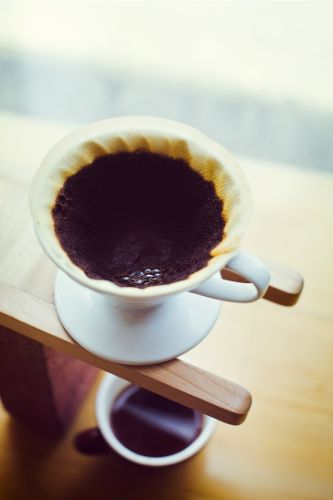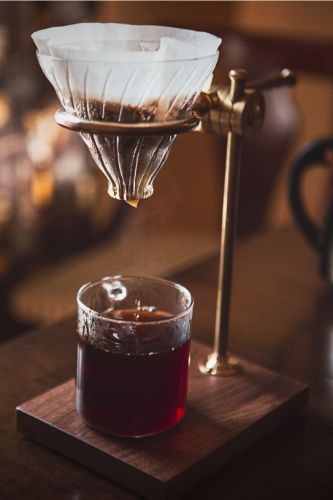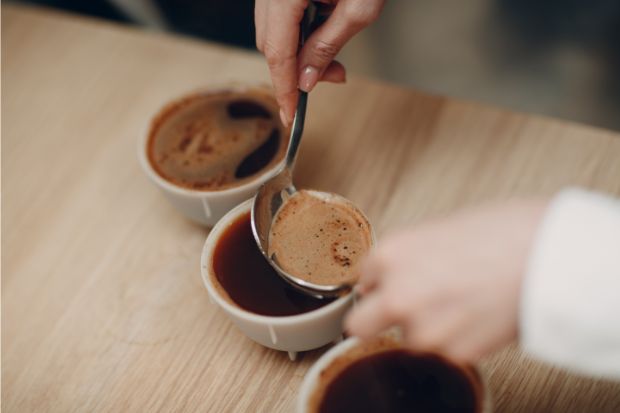Just so you know, as an Amazon Associate we earn from qualifying purchases made via bold red links, buttons or images.
Last Updated on December 8, 2023
If you’re starting to taste a lot of different coffees from around the world to develop your palate and personal taste, one technique you might want to try that has become more popular in recent years is aerating coffee.
It’s simple, fun, inexpensive, and can open up a new depth of flavors to explore.

What Is Aerating Coffee and Why Do It?
When we talk about aerating coffee, we’re talking about the process of adding air to liquid.
Doing this helps release carbon dioxide and allows flavors to develop. Aeration exposes your drink to oxygen, creates smoothness, and rounds out the bitterness.
What Is the Best Way To Aerate Coffee?
There are several different methods used to aerate a cup of coffee, and you don’t have to be a coffee expert to try any of them.
Which method is best for you comes down to your personal preference and how simple or elaborate you want to be with the equipment and process.
How To Aerate Coffee
To aerate coffee, you can use a pour-over method, a cupping method, a French press, an aerator tool, or a wine aerator. Let’s take a look at each approach.
Pour-Over Stand

One good method to try out—especially if you are making multiple cups—is pour-over, which basically involves pouring hot water over coffee grounds.
The key is to incorporate a pour-over stand—preferably with adjustable height—so your coffee can fall a long distance into your cup or carafe as it brews, aerating as the cup fills.
The other equipment is pretty basic and includes simple items found in almost any kitchen: a cone, a filter, coffee, a kettle, and a coffee pot or cup (or even just a small soup bowl).
- Wet the filter with 200° F water
- Add freshly ground coffee
- Raise your pour-over stand so that the bottom of your cone is 6-8 inches above your cup or carafe
- Pour a little hot water over the coffee in a circular motion (go easy here)
- Pour more water slowly and directly over the top in the middle of the grounds
Cupping
Cupping involves pouring coffee back and forth between two cups. You can slurp the coffee straight from the coffee cup, like wine tasting, or use a large spoon to slurp from two different cups and compare.
My friend who makes coffee purchasing decisions for the restaurant industry uses this method when visiting roasteries.
French Press
The key to using a French press to aerate coffee is to stir the liquid vigorously for 30 seconds before pressing the plunger down.
Aerating Tool
This involves using a whisk that whirls the liquid, causing aeration. These are easy to find online. The Bean Envy Milk Frother has stellar reviews and is very affordable:
Wine Aerator
You can also simply pour your coffee through a wine aerator.
What Type of Coffee Beans Should You Use for Aeration?
Start with a darker roast. This generally works better for coffee aeration, as a dark roast has more flavor than a light roast and is less acidic.
Aerating Coffee: Pros and Cons
The pros are a smoother, creamier cup. The cons are adding a step and more time to the process of making coffee.
Tip: let your coffee cool down just a touch after aeration. Very hot coffee that has been aerated can taste bitter.
Aerated vs. Non-Aerated

There are some important differences between aerated and non-aerated coffee.
Aerated coffee tends to have more body, taste smoother on the palate, and develop more floral and berry notes.
Non-aerated coffee has more acidity, as well as mellow berry notes.
Try them head-to-head and decide which one you like best! You might just discover a new favorite coffee drink.
How Long Should You Aerate Coffee For?
You only need to take a minute or two to aerate your coffee. For a stronger, more pronounced cup, 30-60 seconds should work just fine. For a smoother, mellower drink, try two to five minutes.
How Many Times Can You Aerate Coffee?
When cupping or when whirling with a whisk, don’t overdo it. Repeatedly aerating for too long can damage the flavor of your coffee, resulting in some sour/bitter notes.
Can You Aerate Other Kinds of Coffee?
Cold Brew
Do not aerate cold brew coffee. The process of aeration can make cold brew taste more bitter and acidic, resulting in bad coffee.
Decaf Coffee
Yes, decaf coffee can work the same as regular coffee.
Conclusion

As with any food or beverage preparation, you should experiment to find out what’s best for you.
In general, aerating coffee can make a difference in your taste enjoyment.
Get some friends together and organize a coffee tasting like you would a wine tasting. Aim for mid-morning or after lunch.
Start with three types of beans, with six coffee cups or small soup bowls per person.
Mix things up by trying the same bean head-to-head, first aerated and then non-aerated.
Have fun, and take notes!


